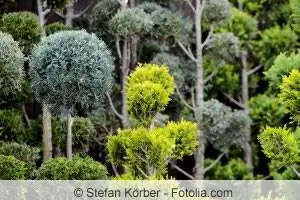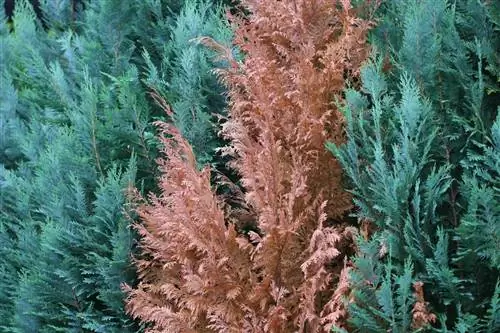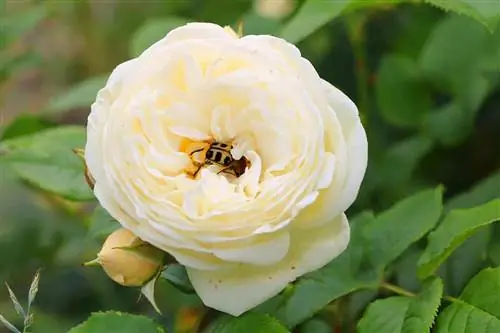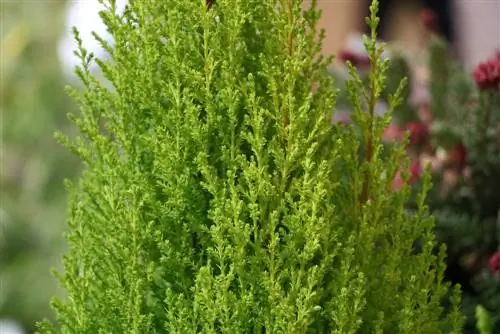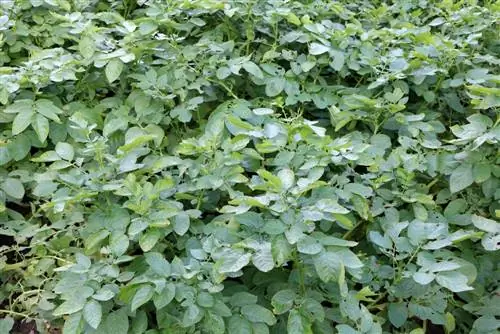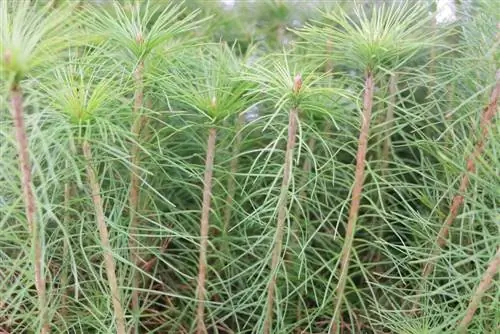- Author admin [email protected].
- Public 2023-12-17 03:39.
- Last modified 2025-01-24 12:45.
Spruce trees and arborvitae in particular are plagued by fungi and pests. If detected early, the tree can be saved in most cases. An optimal location and appropriate care of the tree prevent infestation or at least keep it within limits. When an illness occurs, the first thing you notice is wilting shoots, which later turn brown. In these cases, you should act quickly. However, it is not always easy to find out what causes this wilting.
Causes of damage to conifers
At the beginning of autumn, many conifers shed large amounts of old needles. This is a completely natural phenomenon and no cause for alarm. Only when entire shoots turn brown - especially the young shoots - should the plant be examined closely. The reasons for this can be very different.
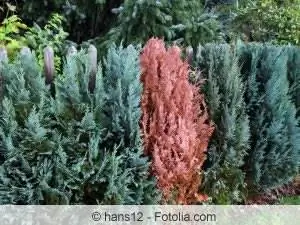
Unfavorable location conditions
In the vast majority of cases, yellow or brown twigs and falling needles on conifers are not due to pests. Many species of coniferous trees occur naturally in wetter areas. In our gardens, these conifers often suffer from a severe lack of water. There are also further location problems:
- longer, dry frost periods (frost drying)
- Waterlogging
- Soil compaction
Tip:
Conifers or conifers require relatively uniform soil moisture. Also in the winter. Therefore, often water smaller amounts during frost-free, dry periods!
Nutrient Deficiency
A nutrient deficiency can also lead to needle drop and individual shoots dying. However, this cause is quite rare. Much more often, the use of large amounts of road s alt, Epsom s alt and conifer fertilizer leads to damage (over-fertilization).
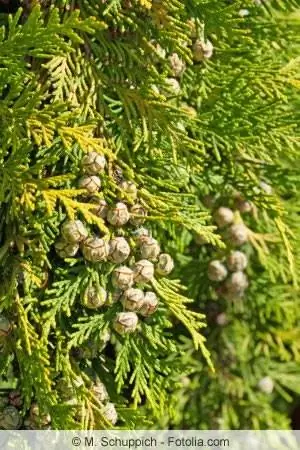
Diseases
In addition to a location-related problem, various viruses, bacteria or fungi can also infect needles and woody plants. While harmful fungi sometimes destroy entire areas in forests or in cultivated areas, they are only found sporadically in gardens or parks. If storm or hail damage occurs, the affected branches should be cut promptly. The wounds form entry openings for pathogens.
- Rust fungi: Pine blister rust mainly affects five-needle pine species. The fungus hinders water transport in the plant. Affected parts turn brown and die. In autumn, spindle-shaped swellings appear in the trunk and branch areas, which are somewhat reminiscent of cones. Resin flow is often noticeable. This also applies to the juniper rust, which causes the pear grid on the pear tree.
- Pine shed: All needles fall off except for the young shoots. In damp weather, the fungus also spreads to he althy shoots. In extreme cases, this leads to the complete death of the plant.
- Thuja scale brown: The fungal disease affects various species of arborvitae. Initially, the fungal disease manifests itself as individual yellowed leaf scales on the underside of the branch. Later the shoots fall off. Young plants are particularly at risk.
- Needle tan (scale tan): Another fungal disease causes shoot and branch death. Especially in spring, individual shoot tips brown and die. A closer look reveals small black spore deposits.
- Root and stem rot: An infestation with the soil-breeding fungus Phytophthora cinnamomi occurs primarily on waterlogged soils and initially causes root rot and later stem rot. In the lower trunk area, purple-colored, spongy rot spots can be seen.
- Pestalotia branch dieback: Other fungi are not harmful fungi in the true sense. The fungus Pestalotia funerea does not cause direct damage, but is a so-called weakness parasite that occurs on previously damaged trees. The shoot tips of the plants turn gray.
- Hallimasch infestation: If the entire tree dies, this can indicate a honeycomb infestation. The fungus Armillaria mellea spreads via spores in the soil and penetrates the roots of weakened trees. There it spreads out in a white network between the bark and wood.
- Grey mold fungus: Botrytis cinerea can cause the soft, young shoots of coniferous trees to turn brown in wet and cold spring. Aerate the soil well.
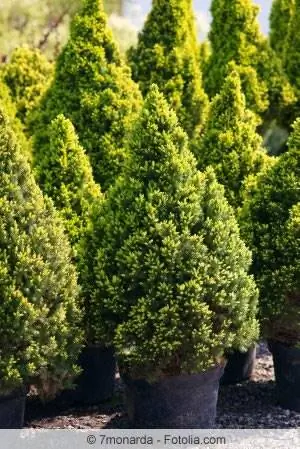
Animal pathogens
The majority of animal pests on conifers belong to the arthropods such as insects and arachnids. Some insects spend their larval stage in the wood and cause lasting damage to it.
- Leather Moths: The thuja leaf miner is a gray-white moth (Argyresthia thuiella) that is only about 4 millimeters long. In June it lays its eggs between the scales of the shoots of arborvitae. The caterpillars bore into the interior of the plant. The infestation can be recognized by small holes in the bark.
- Arachnids: Arachnids include, for example, the coniferous spider mite, which damages numerous coniferous trees, especially the sugar loaf spruce. A white web can often be seen on the shoots. A severe infestation leads to needle browning and subsequent waste.
- Plant galls: This is the name given to ongoing shape changes that can occur after a pest infestation. These are caused by an infestation with gall mites, gall lice, gall midges or gall wasps. The yew bud gall mite deforms shoots and needles so that they look like barbed wire. Cut out affected shoots.
- Lice: The different types of lice, such as the spruce tube louse (Sitka louse), feed on the underside of the old needles, causing them to initially turn yellow and then brown.
- Beetles: After a few years of prolonged drought, bark beetles are increasingly appearing. Dead and broken branches between autumn and spring with small thickenings at the base indicate an infestation with bark beetles. There are also numerous small drill holes on the trees. Weevils and their larvae feed on needles, bark and roots. Combating it is difficult because of the hidden way of life.
Pest Control
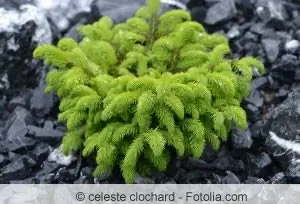
The prerequisite for avoiding and properly combating parasites is identifying the cause. Therefore, regular inspection of the trees is essential. If brown spots appear in the conifer, the entire plant must be examined for infestation. Pests can indicate:
- white webs
- twisted needles and twigs
- Drilling holes
- Drilling chips on the trunk and ground
- spongy yellow-brown (cone-like) growths on the branches
- Trunk discoloration
- Removing the bark
First, the diseased shoots should be cut off down to the he althy wood. In most cases, this curbs the infestation to a great extent. Smaller trees can usually still be easily treated with pesticides. Fungi or boring insects can hardly be controlled. In an emergency, the advice centers of the responsible municipality or plant protection services can help. If the conifer can no longer be saved, it must be removed from the garden as quickly as possible, often along with the roots.
Tip:
Never throw cut shoots into the compost! The pest continues to spread there. It is best to throw it in the household waste or burn it.
Which conifers are vulnerable?
- Yew: Fungal infestation, gall mites, mealybugs, scale insects, weevils
- Spruce: Aphids, spider mites, fungal infestation, leaf miners, beetles
- Pine: Fungal infestation, scale insects, mealybugs, sawflies
- Tree of life (thuja): Leaf miners
- Juniper: Rust, spider mites, mealybugs, leaf miners
Conclusion
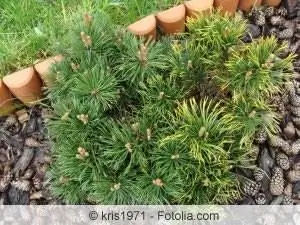
Especially weakened plants that are not in an optimal location, whose soil is too dry or too moist, become susceptible to diseases and pests. Spruces, pines and arborvitae are particularly affected. In addition to various fungi, there are also a number of sucking or drilling insects, beetles or arachnids such as lice, mites or moths. The fight should be carried out as quickly as possible by cutting the affected parts of the plant, then in many cases the tree can still be saved.
Interesting facts & tips
- Various bark beetles like to settle on freshly planted conifers, but also longhorn beetles such as the thuja beetle. Since the beetles can develop several generations per year depending on the weather and temperature, they are particularly harmful.
- Spruce trees in particular are often plagued by pests and diseases. The pine shed causes the needles to turn brown. They fall off and, when wet, infect the still he althy needles.
- jaw blister rust is a fungus that sits on the branches and makes water supply difficult. After a few years this leads to the death of the affected shoot. The Sitka spruce louse primarily attacks Sitka and blue spruce trees. The lice suck on the needles, which later fall off. The mealybug, on the other hand, attacks many conifers and conifers, such as pines, spruces, Douglas firs, cedars and larches. The plants are severely weakened, especially if the infestation lasts for several years.
- The yellow spruce gall louse attacks many species of spruce, especially the base of the annual young shoots. These bend easily and dry out.
- Thujas suffer from thuja scale brown and the thuja leaf miner. The moth creates feeding tunnels in the scale branches. They dry out from the inside and turn brown. The scale browning is shown by individual yellowed leaf scales under the branches. The affected shoots fall off. It's a mushroom's fault.
- In addition, shoot and branch death, bark and wood diseases and root and trunk rot can occur.

